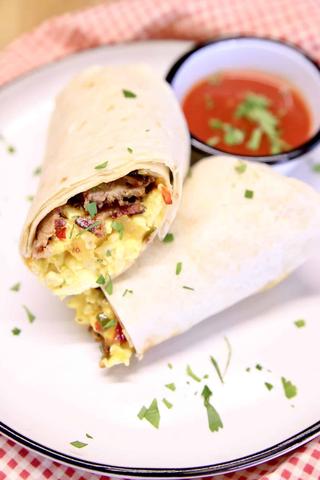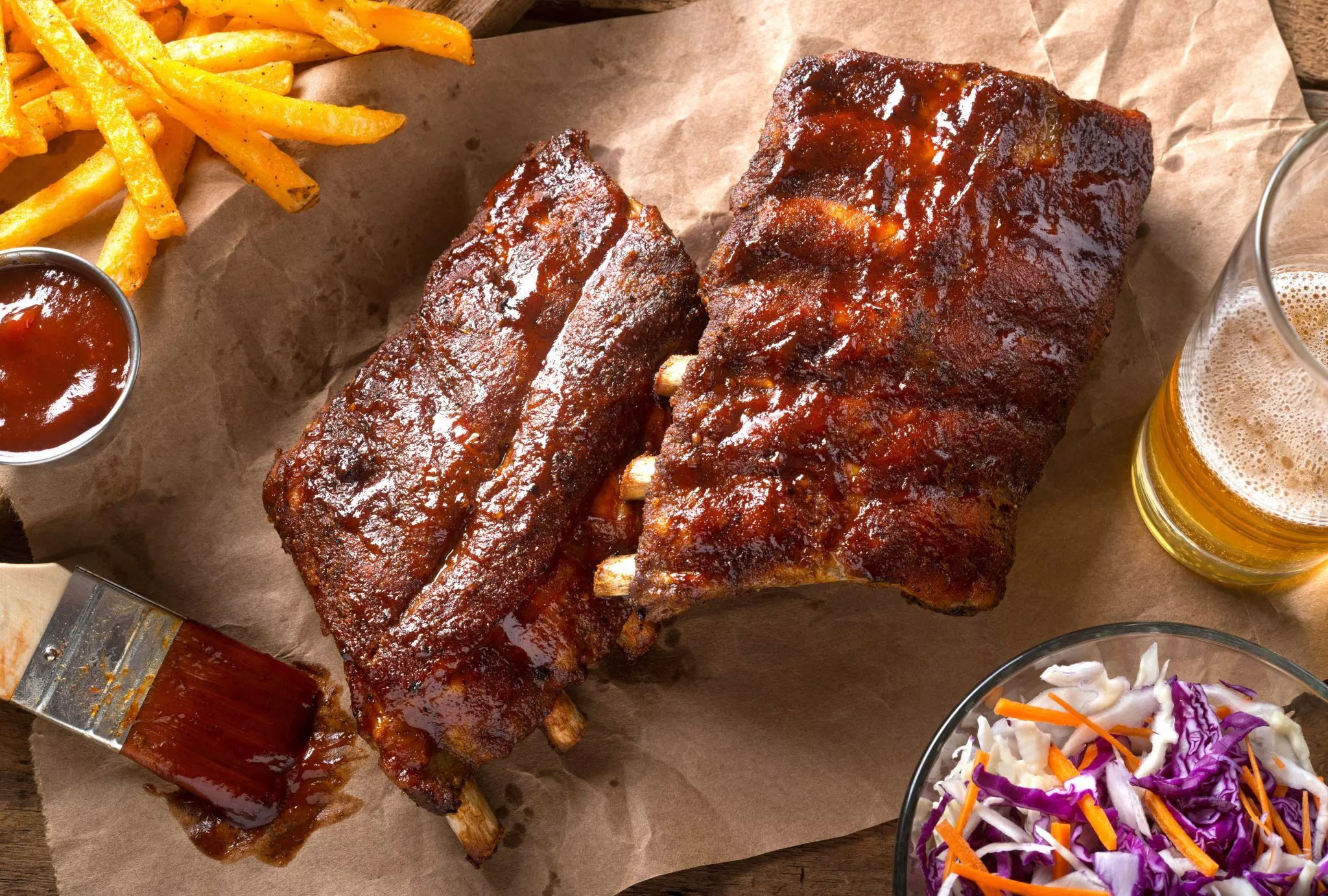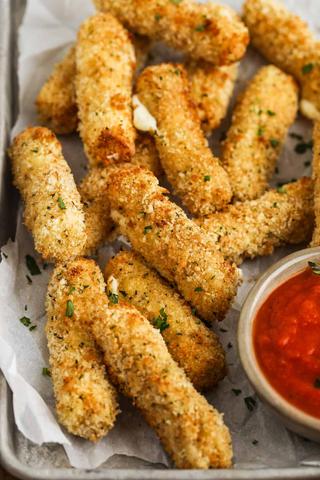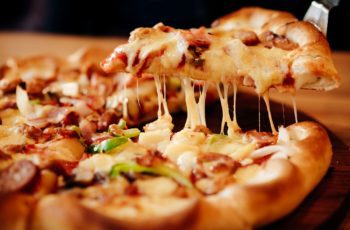
Many of us are passionate about outdoor cooking and own both Grill vs Griddle, using them for different culinary tasks. The inevitable question is, “better?”
That’s like asking if a spoon is better than a fork—the answer depends entirely on what you’re trying to eat. This guide cuts through the noise. It shares direct, no-fluff insights from experienced cooks who’ve spent years mastering both tools, giving you straight talk on their strengths and weaknesses..
They’re Completely Different Tools

A griddle is flat and smooth with no holes anywhere. It’s essentially a giant hot plate that sits on the patio.
A grill features metal bars with gaps between them. Food sits directly over flames. Fat drips through, and smoke rises up.
These differences matter more than most people realize.
On a griddle, heat spreads evenly across the entire surface. Nothing touches flames directly. Control is complete and predictable.
On a grill, flames lick the food through those bars, creating char marks and smoky flavor—that authentic outdoor taste that can’t be replicated indoors.
Flat Top Grill vs Griddle: Same Thing, Different Name

People frequently get confused about this distinction.
A flat top grill IS a griddle. Same cooking surface. Same function. The name just depends on context.
Restaurants call them flat tops. Home cooks say griddle. Some folks use both terms interchangeably.
Don’t stress about the terminology. If it’s flat and smooth, it’s the same cooking tool.
When to Use a Griddle

Every Sunday morning, many families make breakfast on their griddles—eggs, bacon, pancakes, hash browns, all at once. The griddle handles it beautifully.
Griddles are ideal for:
- Smash burgers (they need constant contact with hot metal)
- Fried rice and stir-fry
- Fajitas with peppers and onions
- Fish that would fall apart on grill bars
- Quesadillas
- Grilled cheese sandwiches
- Anything small that might slip through grill grates
Griddles typically run around 350°F—hot enough to sear but controlled enough for delicate items.
When to Fire Up a Grill

For many households, Friday nights are grill nights. Steaks, chicken, burgers, corn on the cob—that’s grill territory.
Grills excel for:
- Thick steaks needing serious heat
- Chicken requiring crispy, smoky texture
- Burgers where fat should drip away
- Vegetables being charred (bell peppers, asparagus, zucchini)
- Hot dogs and brats
- Anything benefiting from grill marks
Grills hit 400°F easily, sometimes much higher. That intense heat creates results that griddles can’t match.
The smoke from dripping fat adds a distinctive flavor. Those char marks aren’t just visually appealing—they taste different, better for certain foods.
Steak: Grill vs Griddle?

Read more about best grilldle here
Read more about best grill here
Experienced cooks who’ve prepared hundreds of steaks both ways offer honest insights.
Grills deliver that steakhouse char. High heat hits meat fast. Fat drips onto flames below, creating smoke that flavors everything. The result is texture contrast—crusty outside, tender inside. Those grill marks impress guests.
Griddles provide even browning everywhere with no cold spots. Butter and garlic can pool around the steak. The entire surface makes contact with meat, not just the spots touching grill bars.
Which is preferable? It depends on the cut.
Thin steaks like skirt or flank? Griddle wins. They cook fast and need consistent heat across the whole surface.
Thick ribeyes or New York strips? Many lean toward the grill. That intense, direct heat sears perfectly.
But honestly? Both produce excellent results. Anyone claiming there’s only one right way is probably oversimplifying.
Gas Griddle vs Gas Grill: A Practical Comparison
Many outdoor cooks own both gas-powered units. Here’s a typical setup comparison.
A popular choice is the Blackstone 36-inch griddle. It features four burners under a thick steel plate, creating different heat zones—pancakes on one side, crispy bacon on the other. It feeds crowds easily. Connect a propane tank, turn the knobs, and cooking begins in five minutes.
Cleanup is straightforward: scrape while warm, wipe down, add some oil. Done.
A common grill setup is something like the Weber Spirit. Three burners heat the grates above them, providing decent temperature control. Multiple zones allow searing on one side while cooking slower on the other.
Cleanup takes longer. Those grates trap food in every corner, requiring a wire brush and some effort.
Cost-wise? Mid-range griddles run about $400, while comparable grills cost around $500. Both options can be found cheaper or significantly more expensive depending on features.
Space requirements are similar—both occupy roughly the same patio real estate. However, griddles typically have better built-in grease management.
Read more: Weber Q1400 Electric Grill Review
Which One Is Healthier?

This question comes up frequently in cooking circles.
Grills let fat drip through the grates. Less fat means fewer calories. When cooking ribeyes or chicken thighs, that fat drips into the drip pan instead of remaining in the food. Technically, grilled food is leaner.
But griddles aren’t unhealthy. Cooks control how much oil they use. Lean proteins and vegetables can be prepared with minimal fat. Nothing falls through and burns.
There’s one health concern with grills though. High heat plus smoke can create compounds called PAHs and HCAs. They form when fat hits flames and smoke rises back up. Some studies link them to health issues.
Griddles avoid this completely. No flare-ups. No smoke coating food. Just clean, direct heat.
The balanced perspective? Don’t choose based solely on health. Both fit into normal diets. Cook a variety of foods. Don’t char everything black. Eat vegetables. The cooking method matters less than overall dietary patterns.
So Which One Should You Get?
The straight answer: it depends on what gets cooked most.
Griddles are more versatile. They can cook almost anything—eggs, pancakes, steak. They’re like that friend who can do everything: fix cars, bake cookies, help with moving.
Grills do one thing brilliantly: make food taste like it was cooked over fire. For those who mainly cook meat and vegetables and love that charred, smoky taste, grills are the answer.
Consider cooking habits carefully. Big Sunday breakfasts? Griddle. Burgers every Saturday in summer? Grill.
Space matters too. Those with decent patios can accommodate both eventually. Small balconies require choosing one and committing.
Budget tight? Consider a griddle insert that sits on grill grates. Many cooks started this way before purchasing standalone griddles. These inserts work great and cost around $40.
Pros and Cons
Griddles:
| pros | cons |
|---|---|
|
|

Grills:
| pros | cons |
|---|---|
|
|
FAQs
- Can you cook steak on a griddle instead of a grill?
Yes, absolutely. Many cooks prepare steaks on griddles regularly. The flat surface gives even browning across the entire steak. While there won’t be grill marks or smoky flavor, a beautiful crust forms. The key is getting the griddle extremely hot first—around 400-450°F. Adding butter and garlic provides extra flavor. Many high-end steakhouses actually use flat tops because temperature control is superior.
- What can you cook on a griddle that you can’t cook on a grill?
Eggs are the obvious one—imagine trying to fry an egg on grill bars. Pancakes, French toast, and hash browns all need flat surfaces. Fried rice, stir-fry, and fajitas work excellently on griddles. Delicate fish stays intact on griddles but falls apart on grills. Anything small, runny, or fragile works better on flat surfaces.
- Is a griddle healthier than a grill?
Grills are slightly healthier for fatty meats because fat drips through grates. But the difference isn’t dramatic. On griddles, cooks control oil amounts precisely. Grills can create compounds called PAHs and HCAs when fat hits flames and smoke rises back up. Griddles avoid this completely. Both are fine for normal diets.
- Why do burgers taste better on a griddle?
It’s all about the crust. When making smash burgers on a griddle, meat stays in constant contact with the hot surface. More browning occurs, creating flavor. On grills, only the spots touching bars get intense browning. Plus, burgers sit in their own juices on griddles. Many cooks add butter to the griddle before cooking burgers—it makes a huge difference.
- Can I get grill marks on a griddle?
No, traditional grill marks can’t be achieved on flat griddles. Grill marks come from food touching hot bars while surrounding areas don’t. That’s impossible on smooth surfaces. If grill marks matter, use a grill. But remember—grill marks are mostly aesthetic. The flavor comes from browning and char, which griddles can absolutely deliver.
- Which is easier to clean, a grill or griddle?
Griddles are considerably easier. While still warm, scrape off food, wipe with a damp cloth, dry, and add oil. Five minutes total. Grills require wire brushes and scrubbing between all those grate bars. Most cooks spend 15-20 minutes cleaning grills after each use.
- Can you use a griddle indoors?
Yes, but with limitations. Small electric or stovetop griddles work great indoors. Cast iron griddles that sit across two burners are popular. Large outdoor propane griddles shouldn’t be used indoors—carbon monoxide risk. Ensure kitchen vent hoods are running to handle smoke and grease vapor.
- Do griddles take longer to heat up than grills?
They’re about the same. Gas griddles typically take 10-15 minutes to reach cooking temperature. Gas grills take the same. Griddles’ thick steel plates hold heat longer once hot. Charcoal grills take longer—usually 20-30 minutes. Electric griddles heat fastest, often in 5-10 minutes.
- Can I add a griddle to my existing grill?
Yes! Many outdoor cooks started this way before buying standalone griddles. Griddle inserts sit on top of grill grates. Cast iron options from brands like Lodge cost about $40. They turn half a grill into a griddle surface. Weber makes them for specific grill models. Ensure getting the right size for your grill.
- Which should I buy first if I can only afford one?
Buy whichever matches what gets cooked most. Think about the last month. More breakfasts and stir-fries? Get a griddle. More steaks and burgers where grilled flavor was desired? Get a grill. Many would lean toward griddles because they’re more versatile. But die-hard meat grillers should start with grills.
Learn More About Grilling
If you want to learn more about grilling, check out these other helpful resources!







